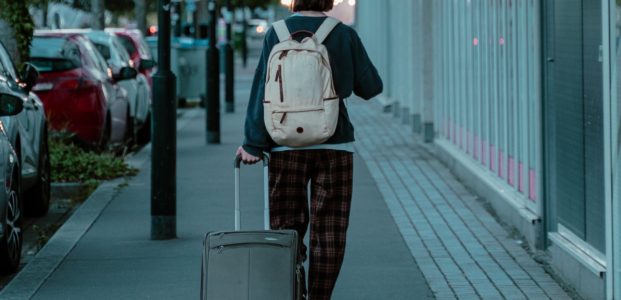Content Warning: this blog discusses sexual violence, harassment, and homelessness.
Sometimes it can be hard to see how things connect. I’ve been thinking about my own experiences during this year’s Homelessness Week (1-7th of August). While I’ve never experienced homelessness for an extended period of time, I once needed to flee housing due to sexual harassment. While I was lucky and able to find alternative housing quickly things could have been much different – and they often are for many people.
According to an Everybody’s Home report “…each year more than 7,600 women are returning to violent partners, and 9,120 women are becoming homeless after escaping violent homes because they have nowhere else to live.”
My personal experience did not become violent, but I also have no way of knowing if it would have escalated to that point. At the time I was an international student overseas and staying with a host family. The advances came from the father, who was the only person who could speak English in the house which created a significant power dynamic. He made a number of offhand comments and invitations which I overlooked and brushed off as a language barrier issue. One night things escalated with an invitation to spend the night with him. I slept in my bed that night with a million thoughts in my mind as to what I was going to do, and what would happen if I stayed. Would he persist? Would he deal with rejection well? Would he make up lies about me to have me evicted? Would he become violent?
I was lucky to have my student community around me – I packed a bag in the morning and went to stay with a friend, not knowing how long I would be couch surfing. I was lucky to have family back home that were able to financially help me through the situation. I was lucky that alternative housing was available to me quickly and I was able to move in less than a week. I was lucky and had systems of privilege to help me out of that situation. And still for weeks after I was petrified that I would see him again in town. That I would have to have some kind of altercation about it. That my safety was still compromised.
If any one of those things did not happen, the situation could have been very different for me, as it is for many people experiencing violence in their homes. Many people do not have family or friends to go to, money to secure housing or even the chance like I had to leave the moment they start to feel unsafe. Things only become more difficult if there are children involved, or for example, the person leaving is not able-bodied. Many people may only have the choice to stay or become homeless – where they will still face a significant risk of violence. These situations feel hopeless and isolating, and are only worsened by the fear of stigma. These are scary situations that you can become trapped in with little hope of getting any better.
This extends far beyond intimate partner violence. For me, unsafety did not come from a partner, but from someone I lived with. It could be a housemate, a friend of someone in the house, or a family member.
This issue is extremely important to address when we look at homelessness and violence prevention. It is important to remember that my experience is the exception, not the rule. While what happened to me was on the lucky side of things, it did teach me a lot about how easily a person can slip into housing insecurity, and how it is important to ensure there is adequate information and resources available to anyone who needs them to secure their safety.
If you are experiencing housing instability or unsafety in your home and need support, find a list of services here, with many statewide and regional available (please note this webpage does not include a Quick Exit button). You can also visit Safe Steps Family Violence Response Centre for family violence-specific services.

